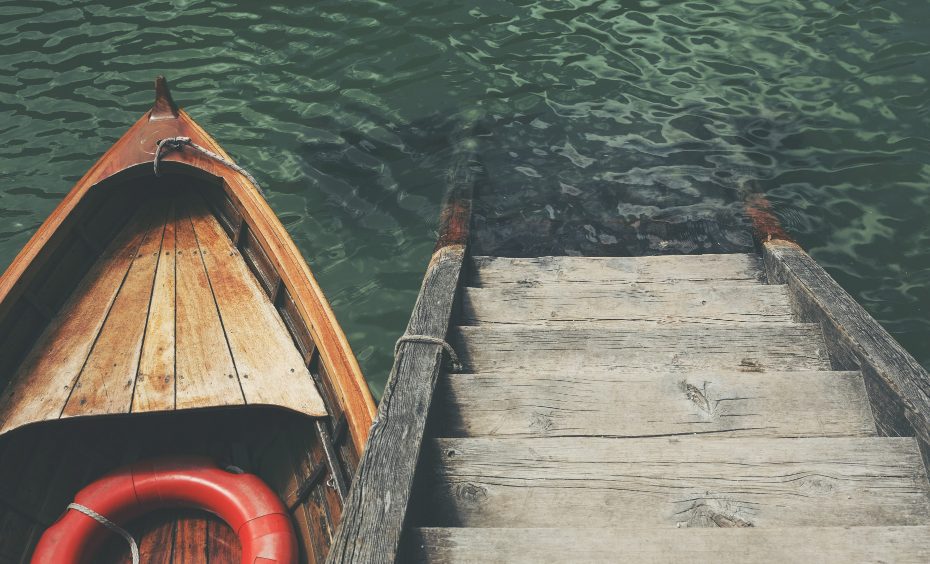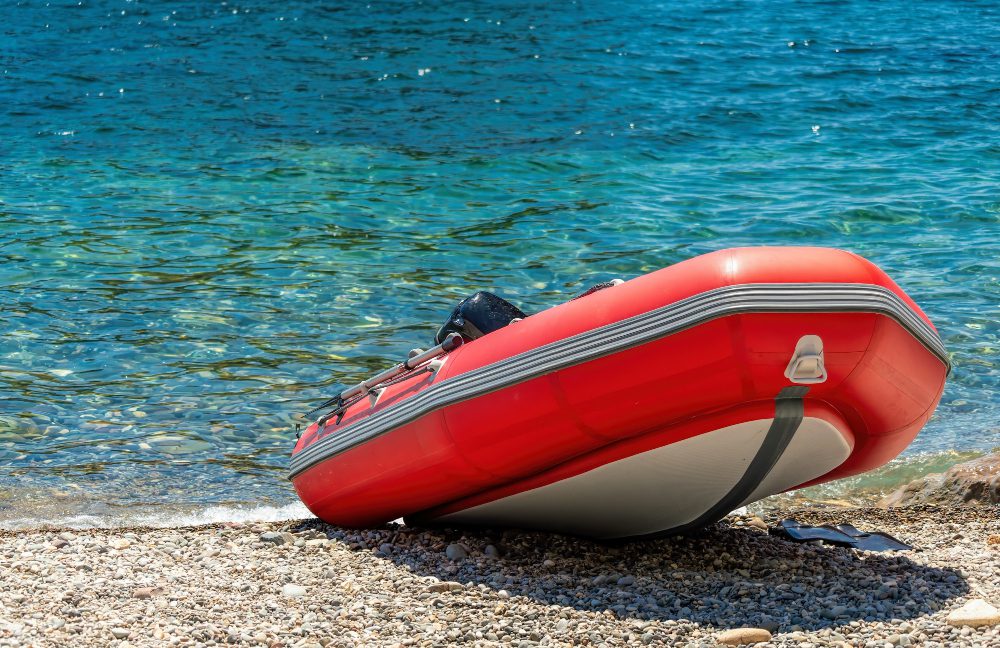Which is a small wooden boat?
A small wooden boat, often referred to as a dinghy or rowboat, is a type of watercraft that is used primarily for recreational purposes or short-distance transportation. These boats are typically made of wood because of its durability and buoyancy, making it ideal for navigating calm waters such as lakes, ponds, and rivers.
Characteristics of a Small Wooden Boat
Small wooden boats come in various shapes and sizes, but they share some common characteristics. These include:
1. Size: Small wooden boats are typically less than 20 feet in length, with some even smaller, ranging from 8 to 16 feet. Their compact size allows for easy maneuverability and transport.
2. Construction: These boats are traditionally built using wooden planks or panels, often with a lapstrake or clinker-built construction method. Wood provides strength, flexibility, and a classic aesthetic appeal.
3. Design: Small wooden boats can be designed for rowing, sailing, or a combination of both. Rowboats usually have oarlocks or thole pins for rowing, while sailing dinghies feature masts, sails, and rudders.
Uses of Small Wooden Boats
Small wooden boats have been used for centuries for a variety of purposes. Some common uses include:
- Recreational boating: Many people enjoy leisurely rowing or sailing in small wooden boats for relaxation and enjoyment. These boats provide a peaceful way to explore bodies of water and commune with nature.
- Fishing: Small wooden boats are often used by anglers in search of the perfect fishing spot. Their maneuverability allows fishermen to navigate through narrow channels or reach secluded fishing holes.
- Transportation: In some regions, small wooden boats serve as a means of transportation for short distances. They can be used to shuttle people or goods between islands, docks, or shoreline communities.
Advantages and Disadvantages
Advantages:
- Durability: Wood is known for its durability, allowing small wooden boats to withstand impacts and rough waters.
- Repairability: Wooden boats are relatively easy to repair compared to their fiberglass or metal counterparts.
- Aesthetics: Many people appreciate the classic and timeless beauty of small wooden boats.
Disadvantages:
- Maintenance: Wooden boats require regular maintenance, including varnishing, painting, and sealing to prevent rot and decay.
- Weight: Wood is heavier than other boat-building materials, which can affect portability and handling.
- Cost: Building or purchasing a small wooden boat can be more expensive compared to other types of boats.
In conclusion, a small wooden boat is a versatile watercraft that offers a unique boating experience. Whether used for recreation, fishing, or transportation, these boats provide a connection to nature and a sense of tradition. While they require proper maintenance and care, the enduring beauty and charm of a small wooden boat make it a popular choice among boating enthusiasts.
What is a small boat made from animal skins called?
A small boat made from animal skins is commonly referred to as a coracle. This unique type of watercraft has been used by various cultures around the world for thousands of years.
Origin and construction
The coracle has a long history and can be traced back to ancient times. It is believed to have originated in different regions such as Wales, India, Iraq, and Iraq. Despite the geographical variation, the basic design and materials used remain relatively similar.
To construct a coracle, animal skins are typically used to cover a lightweight frame made of different types of wood. The skins are often sewn together using materials like animal sinew or more modern alternatives such as nylon thread. The frame is usually circular or oval-shaped, with the skins stretched tightly over it.
Advantages and uses
Coracles offer several advantages due to their simple yet efficient design. They are lightweight, making them easily portable and maneuverable on both calm and fast-flowing water bodies such as rivers and lakes. Their small size allows for easy navigation in narrow spaces where larger boats would struggle.
Originally used for fishing and transportation, coracles are now primarily used for recreational purposes. They are popular among anglers, who find the small size and maneuverability advantageous for fishing in remote areas. Additionally, coracle races and competitions are held in some regions, showcasing the unique skill required to navigate these tiny boats.
Cultural significance and preservation efforts
“The coracle holds immense cultural significance in various regions, serving as a symbol of traditional craftsmanship and heritage.”
Throughout history, coracles have played important roles in various cultures. In Wales, they were used by fishermen and were even mentioned in ancient texts and folklore. In India, coracles known as “parisals” are still used by local fishermen along the southern coast.
Despite the declining usage of coracles due to modern advancements in boat construction, efforts are being made to preserve this traditional watercraft. Museums, cultural exhibitions, and even coracle regattas help raise awareness about their historical significance and promote their continued existence.
In conclusion
The small boats made from animal skins, known as coracles, have a rich history and cultural significance. Their unique construction, lightweight design, and maneuverability make them ideal for fishing and recreational activities. While the usage of coracles has decreased over time, efforts are being made to preserve and celebrate these traditional watercraft.
What is a small boat that pulls other ships?
A small boat that pulls other ships is commonly known as a tugboat or a tug. Tugboats are specially designed and built to assist larger vessels in various maritime operations such as docking, undocking, and towing. These powerful and maneuverable boats are essential in harbors, ports, and other areas with heavy maritime traffic.
Types of Tugboats
Tugboats come in different types and sizes to accommodate different operational requirements. Some common types of tugboats include:
- Conventional Tugboats: These are the most traditional type of tugboats, equipped with a powerful engine, towing winches, and robust structures to handle heavy loads.
- Azimuth Stern Drive (ASD) Tugboats: These tugs have propulsion units that are capable of rotating 360 degrees, providing exceptional maneuverability.
- Tractor Tugboats: These tugs have a unique design with azimuthing or steerable propulsion units located at the bow. This configuration allows them to work efficiently in confined spaces.
Tugboat Operations
Tugboats play a crucial role in assisting larger vessels in various operations, including:
- Towing: Tugboats use their power to tow ships that may be disabled, in need of assistance, or simply require guidance through narrow channels or congested areas.
- Pushing: Tugboats can also push barges, floating docks, and other non-propelled vessels.
- Salvage Operations: In case of accidents or shipwrecks, tugboats are often involved in salvage operations to help recover and remove damaged ships or objects.
The Importance of Tugboats
Tugboats are essential for maritime safety and efficiency. They ensure the smooth and secure movement of large vessels by providing additional power, control, and maneuverability. Without tugboats, the risks of collisions, grounding, and other accidents would be significantly higher in congested areas or during adverse weather conditions.
“Tugboats are the unsung heroes of the maritime industry, silently working behind the scenes to ensure the safe navigation of ships.”
Tugboat Specifications
Tugboats come in various sizes, ranging from small harbor tugs to powerful ocean-going tugs. Their specifications may include:
| Tugboat Type | Length (ft) | Bollard Pull (tons) |
|---|---|---|
| Conventional Tug | 60-120 | 10-50 |
| ASD Tug | 70-130 | 15-70 |
| Tractor Tug | 70-120 | 20-60 |
These specifications vary depending on the specific model and purpose of the tugboat.
In conclusion, tugboats play a vital role in the maritime industry by providing assistance and ensuring the safe and efficient movement of ships. Their powerful engines, specialized designs, and skilled crew make them essential assets in any port or harbor.
What is a Dory boat?
A Dory boat is a small, flat-bottomed boat with high sides and a narrow, pointed bow. It originated in the coastal regions of New England and was traditionally used for fishing and transportation purposes. Today, Dory boats are popular for recreational use due to their versatility and stability in both calm and rough waters.
History of Dory boats
The history of Dory boats dates back to the early 18th century when European settlers in New England adopted the design from the Native Americans. The word “dory” is believed to have originated from the French word “d’oreille,” meaning ear-shaped, as the boat’s hull is resemblant of an ear.
Initially, Dory boats were made from wood, usually pine or cedar, which made them lightweight and maneuverable. Their design allowed them to be easily launched from the shore and used for various tasks such as fishing, lobstering, and even lifesaving operations.
Characteristics of Dory boats
Dory boats have distinct characteristics that make them stand out among other types of boats. Their flat-bottomed hull gives them excellent stability, making them suitable for angling and standing while fishing. The high sides provide protection from waves, preventing water from splashing into the boat.
Moreover, Dory boats have a pointed bow that cuts through the water efficiently, enabling smooth maneuverability. Their design allows for easy rowing, and they can also be powered by small outboard engines when necessary.
Uses of Dory boats
Dory boats have a wide range of uses, both commercially and recreationally. In the past, they were primarily used for fishing, especially in the shallow waters close to the shore. Their versatility allowed fishermen to navigate through narrow channels and reach fishing spots inaccessible to larger vessels.
In modern times, Dory boats are popular for recreational activities such as leisure boating, river cruising, and even racing. Their stability and durability make them a suitable choice for exploring lakes, rivers, and coastal areas. Additionally, some enthusiasts use Dory boats for rowing competitions and fitness purposes.
Notable Dory boat designs
Over time, various designs of Dory boats have emerged, each suited for specific purposes. Some popular variations include the Banks Dory, which was widely used for commercial fishing in the 19th century, and the Grand Banks Dory, known for its larger size and seaworthiness in rough waters.
Another notable design is the Whitehall Dory, known for its elegant lines and comfortable seating. It gained popularity among pleasure boaters in the mid-19th century and is still favored by those seeking a classic and versatile boat.
What is a Prawn Boat?
A prawn boat, also known as a shrimp boat, is a specialized fishing vessel designed for catching prawns or shrimp in commercial quantities. These boats are equipped with various features and equipment to facilitate the process of catching and handling prawns.
Vessel Design
Prawn boats come in different sizes and designs, but they typically have a low-profile structure with a flat-bottomed hull. This design allows them to navigate shallow waters where prawns are commonly found. The hull is usually made of sturdy materials like steel or fiberglass to withstand rough sea conditions.
Trawling Gear
The main fishing technique used by prawn boats is trawling. This involves dragging a large net, known as a trawl, along the seabed to catch prawns. The trawl is attached to the boat with heavy-duty cables and winches, making it possible to cover a large area and capture a significant quantity of prawns in a single tow.
Onboard Facilities
Prawn boats are equipped with facilities to process and store the catch. They typically have sorting tables where the prawns are separated from other marine species caught in the net. The prawns are then washed and stored in refrigerated holds to maintain their freshness until offloading.
Challenges and Risks
Prawn fishing can be a challenging endeavor due to various factors. Prawn boats often face risks such as adverse weather conditions, mechanical failures, and competition with other vessels. Moreover, the sustainability of prawn fishing practices is a growing concern in order to protect the marine ecosystem.
Quote:
The life of a prawn boat captain is full of adventure and uncertainty. Every trip to the sea brings a new challenge and an opportunity for a bountiful catch.
What is a Coco Boat?
A Coco boat, also known as a coconut boat, is a traditional wooden boat commonly found in the coastal regions of Southeast Asia. These boats are made entirely out of coconut wood, which makes them lightweight yet sturdy.
History of Coco Boats
The origin of Coco boats can be traced back to the ancient times when people in Southeast Asia discovered the versatility and strength of coconut trees. They realized that the coconut wood could be carved into boat hulls and used for fishing and transportation purposes.
Coco boats were traditionally handcrafted by skilled craftsmen who would carefully select the right coconut logs to create the perfect shape and size. This craftsmanship has been passed down through generations, preserving the traditional techniques of boat-making.
Features of Coco Boats
Coco boats are unique in their design and construction. Made from coconut wood, these boats have a distinct natural finish, showcasing the beautiful grain patterns of the wood. They are often painted with vibrant colors, adding to their charm.
These boats typically have a shallow draft, allowing them to navigate shallow waters easily. They are built with stability in mind, making them suitable for both fishing and leisure trips. Coco boats usually have a flat bottom, which helps in maintaining balance and prevents tilting.
Uses of Coco Boats
Coco boats have a wide range of uses in coastal communities. They are primarily used for fishing as they can easily maneuver in shallow waters where larger boats cannot reach. These boats are also popular among tourists for sightseeing and exploring the coastline.
Additionally, Coco boats have become an integral part of cultural festivities and events. They are often used for traditional boat races and parades, showcasing the local heritage and promoting community bonding.
Quotes
“Coco boats are not just vessels, but reflections of our rich cultural heritage.” – Local fisherman
Coco Boat Specifications
| Length | Width | Capacity |
|---|---|---|
| 10-15 feet | 3-4 feet | 2-5 people |
Conclusion
The Dory boat’s unique design and historical significance have made it an enduring symbol of maritime heritage. Whether for fishing or leisure purposes, these boats continue to be appreciated for their functionality, stability, and aesthetic appeal. So, if you’re looking for a boat that combines tradition with practicality, a Dory boat might just be the perfect choice.
Prawn boats play a vital role in the commercial fishing industry, helping to meet the demand for prawns around the world. These specialized vessels are designed and equipped to maximize efficiency in catching, processing, and storing prawns while navigating various challenges at sea.
Coco boats are a fascinating part of Southeast Asian maritime culture. Crafted with precision and care, these boats are not only functional but also carry the stories and traditions of the local communities. Whether for fishing or leisure, the versatility and beauty of Coco boats make them an important symbol of coastal life.



